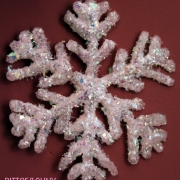Preparing a Ritual Drinking Horn: A folk recipe of sorts
by Dave Hobson AOR
First published in ORB 212, Summer 2259
Every ritual object that we fashion for ourselves is charged with much more power than a purchased object could possible contain. This power, in turn, charges both the liquid that it will hold and the folk who will pass it in Sumble or in Blot. It is a very simple task to create your own drinking horn—don’t be intimidated by the magical significance. Like all things, the result is far more impressive than the method. That said, and without further ado, here is how to prepare a horn for yourself, basically and effectively.
You’ll need*:
1 raw horn (obtain one via leather vendors, black powder suppliers and/or the internet)
1 bottle brush
1 or 2 bottles hydrogen peroxide and/or denture cleaning tablets
3 bottles of Ale or 1 bottle of Mead
1 egg sized amount of bees wax
1 disposable pie tin, or aluminum foil and a small pot
*quantities given are for a 12 inch / 30 cm horn—adjust accordingly for horn size, personal preference.

The first step is to scrub the inner cavity of the horn as best you can. A baby bottle brush and warm, not hot, water is all you need. Don’t use dishwashing liquid as the perfumes and other ingredients will “etch” themselves into the horn material and it creates much more work getting the smell and taste back out. If you use too hot of water the horn can get pliable and distort. All you want to do is get as much loose material out of the inside of the horn as you can. To this end, use just the water and the brush.
The second step is the chemical cleaning of the horn. After the brush scrubbing, you can chemical clean the inside of the horn by using either hydrogen peroxide or a denture cleaning product, or both. Personally, I usually use the hydrogen peroxide because it is cheap, even though you have to do it a few times. The denture cleaner scrubs faster, though, like I said, it is more expensive (even taking into consideration the amount of hydrogen peroxide used). Fill the horn with either product and let it sit in a sink overnight. With the hydrogen peroxide method you will want to do this 2 or 3 times. With the denture cleaner once is probably enough. If you want to be absolutely sure everything is as clean as possible, put the denture cleaner in the first night, and then use the hydrogen peroxide the next night.
The third step is the seasoning the horn. You now need to fill the horn with either Mead or Ale and let it sit for at least six days. Although I hate to see any good drink go down the drain, I use Mead in this step for a couple of reasons. First, because it has higher alcohol content and honey has natural antiseptic properties, you can let it soak in the horn longer. This seems to help improve the “seasoning” quality of this step. Second, if you use Ale you will need to drain and refill the horn every day or two or so, because of the potential for bacteria growth in the room temperature beer. You will know this step is done when, after you drain and rinse the horn, a slight smell of the Mead or Ale will remain instead of the old smell of horn.
The fourth and final step is lining the horn. This step is largely a question of preference. I usually do not line my horns. I tend to like the natural look and feel of it “as is”. If you do want to line your horn, I would only recommend one material: beeswax. I would also strongly caution anyone against any kind of poly sealer. There are people who will say that food grade sealers are available which are perfectly safe. Be aware, however, that just because a product is food safe does not mean that is necessarily alcohol safe. Plus, I feel that the more natural a material for ritual use, the better the quality of its usefulness.
To line the horn with beeswax is a fairly simple process. Line a small skillet or metal pie-pan with aluminum foil, or bend a disposable pie-pan into a small pot (this just makes cleanup much easier). Put the beeswax in the lined skillet. For a 12 inch horn, you will need about a handful of wax (about the same size as an egg). Melt the wax at low temperature. When all the wax is liquid, pour it into the horn. Now, roll the horn around to coat the sides as the wax cools. This sounds trickier than it is. If you have an area that is too thick, or you want to change the coverage in some small area, a hair dryer will sometimes get the wax warm enough to work with without re-doing the entire process.
Note: Be sure not to leave a beeswax coated horn in a car on a hot day, and do not put hot liquids into the beeswax coated horn.
And that is that.
Hail to the Horn-passers.
Hail the Folkway!






